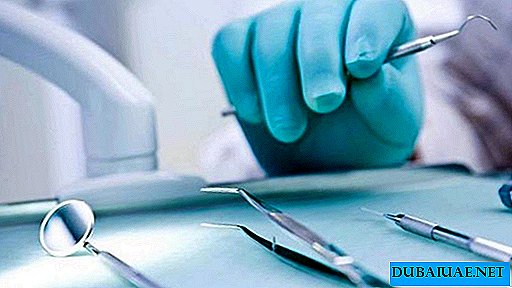- The surest decision is to always build on what has already been given by nature!
- Sometimes a visit to a good hygienist is all that a client needs to achieve the effect in which he is happy. Stains on the enamel can lead to a “yellow” or “brown” smile, and no one likes it.
- If spots on the surface of enamel are not the only problem, then there are impurities in its deeper layers. Here, the best solution may be dental whitening.
- But if the shade of the teeth is not all that worries the patient, then I would invite him to one of our dental consultations, which we call “Smile Consultation”, where we can discuss other options for aesthetic dentistry, such as veneers, crowns, bridges, implants, etc.
Note: It will be great if a dentist joins our conversation, who can supplement it with his own advice, and the patient feels that his problem is not a trifle, since several specialists who make joint efforts are involved in its decision.
Where did the teeth whitening fashion come from?
Many patients are still skeptical about the teeth whitening procedure, since they consider it harmful to tooth enamel, which gradually becomes thinner, making the teeth damaged and sensitive forever. This stereotype came in our days from the 1980s or early 1990s, when teeth were whitened in the world. Then it was believed that the gel containing peroxide penetrates deeply into the enamel, and therefore pores form in the enamel layer, which cause tooth sensitivity and possible damage that cannot be restored. Today we are well aware that this is far from the case! Therefore, we can assure all our patients that we know a lot about whitening methods and continue research.
Realistic goals
The chance that the patient will be able to change the shade of his enamel from A4 to I1 in just one “In Office” whitening session is miserable. The task of the dentist-hygienist is to clearly explain to the patient the limitations that exist in the process of teeth whitening, and if the latter wants to have teeth the color of "white paper", then he needs to install veneers or crowns. Enamel structure: now scientifically! We all know that enamel is a porous structure consisting of the thinnest channels. Over time, under the influence of tea, coffee, red wine, smoking, etc., these channels become clogged. The whitening gel penetrates the enamel and removes these stains. 
Enamel 95% consists of an inorganic structure and 5% of an organic matrix, which is the very organic material that absorbs stains from our food and drinks, the strongest of which is TEA, and its varieties are not always black. “I always say if the traces of tea were left on your cup, then they just remained on your teeth,” explains Beverly Watson. The same goes for coffee, red wine, and tobacco products.
Peroxide for whitening penetrates tooth enamel, releasing free radicals, and thus oxidizes the stain, removing it from the organic structure, discoloring it. It is believed that this chemical process can irritate nerve endings and as a result leads to increased tooth sensitivity. And the higher the percentage concentration of the whitening substance, the greater the likelihood of enamel sensitivity, which can usually vary from the average, the so-called “sensitivity to ice cream”, to electric shock, which can “pierce” the entire jaw. All this, however, is a reversible and short-lived sensation that can be removed by intensive application of fluorine or potassium nitrate.
What is the difference between carbamide peroxide and hydrogen peroxide?
Urea peroxide (CP) is decomposed into hydrogen peroxide (HP) and urea. 10% CP = 3.5% HP. SR is a more stable and predictable structure, therefore, has a longer shelf life. However, due to its two-phase action, more time is required to produce oxygen, therefore, the bleaching period will be longer. HP begins to act instantly.
Of course, this is of clinical importance for people with sensitive teeth who would like to whiten their teeth with peroxide. The right choice for them would be CP, alternating with potassium nitrate for home whitening. HP is much better in the case of more complex stains such as tetracycline stains and is well suited to maintain the whitening effect of “In Office”.
- CP is applied overnight or 4 hours
- НР - for 30 minutes twice a day or for 1 hour once a day, if the teeth are sensitive.
There are two types of professional dental whitening (with variations in both cases)
Home whiteningCustom-made soft gum trays are used when applying gel with a higher peroxide content than OS. They are worn twice a day for 30 minutes or all night 1-2 times a week, depending on the type of peroxide.
In Office Clinic Whitening: Zoom / WY10, etc.In this case, a higher concentration of peroxide is used in combination with UV or a high temperature that activates light, which leads to osmosis, and as a result speeds up the whole process.
Further, in almost all cases, a support phase of 3-4 days is needed. This means wearing custom-made soft trays for bleaching twice a day for 30 minutes in order to fix a new, lighter enamel color and slightly improve it. For more complex and deeper stains, a combination of two whitening procedures may be required - H / W and In Office.
How to maintain the beauty of a smile?
Short term
Usually, after the whitening procedure, a dark enamel color returns due to dehydration / rehydration processes. This can happen especially after bleaching “In Office”.
That is why, thanks to many years of trial and error, the 3-4-day maintenance phase is recommended for everyone to achieve the desired whiteness of the teeth and even its slight improvement.
Long term
- Try to limit your intake of coloring foods and drinks like tea, coffee, fruit juices, red wine, curry, etc.
- Reduce the number of cigarettes smoked, or rather quit smoking completely
- Visit a dental hygienist every 4-6 months
- Use 1 syringe with HP for irrigation of teeth from 6 months to 1 year after bleaching and in addition to it
- Use a toothpaste with a good whitening index, such as Crest Glamor or Beverly Hills
- Floss daily
And finally, about the benefits and disadvantages of whitening
Benefits:
- Lower cost of the procedure compared to veneers / crowns
- Intact Natural Enamel
- High efficiency method
- It can be easily maintained with special tools and regular visits to a dental hygienist.
Adverse factors:
- Cannot change the position of teeth or the color of old fillings
- May increase sensitivity
- Must be combined with permanent home whitening
- Own efforts = better results
- Dark "tetracycline" spots on enamel can only lighten slightly, however, they will still be visible, so installing veneers may be the only solution to this problem.
In conclusion…
I believe that thanks to the insistent advice from the pages of glossy magazines that a modern person should look good, be healthy and feel confident in any situation, the demand for teeth whitening services has begun to grow rapidly. Thus, the power of a snow-white smile should not be underestimated and considered something unattainable, since with such a huge selection of whitening preparations and aesthetic dentistry procedures, today we can give the perfect smile to ALL of our patients. Thank you for your attention and keep smiling! No matter what!







